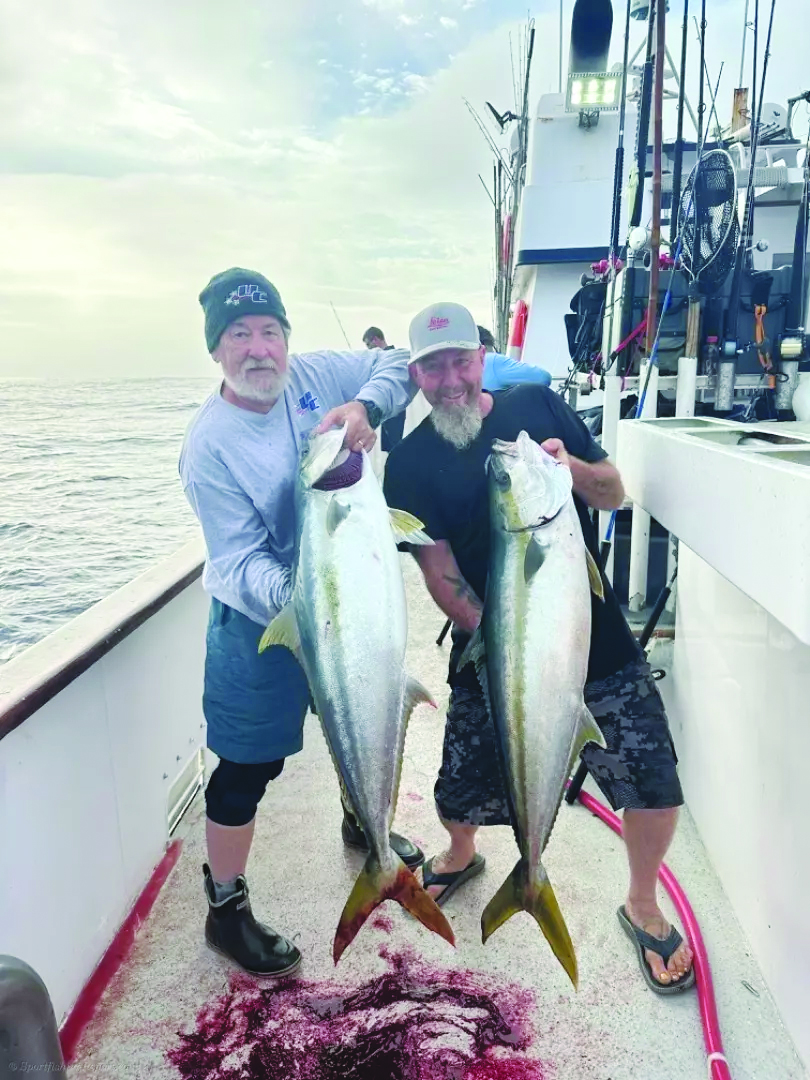…and 100-pound-plus average on bluefin
BY MERIT McCREA
SAN DIEGO/OCEANSIDE — While the local waters bass bite continued to cook, and the average sized bluefin boated in the past few days has weight over 100 pounds, the welcome arrival of kelp paddy yellowtail in one-day range waters south provided fast-paced action aboard the overnight boats.

Chasing those bigger bluefin on a 1-day overnighter has been challenging. Having a full night- plus to get on the big bluefin in the dark has been helpful, and it just doesn’t happen for those on a classic 1-day, even a 1.5-day if it’s not timed to travel during daylight to the tuna grounds up West.
In addition to yellowtail there are bluefin to try for in the southern sector as well, and a less daunting grade. A few dorado have shown up too.
The best thing about the forktails arriving in the area is the grade – mostly 16-pound-plus.
Capt. Scott Meisel, owner of the Condor at Fisherman’s Landing posted “Our little stretch of shorter and later departing trips has kept us off that better grade bluefin for a few days, but excellent yellowtail fishing has been great to see. Today the guys are approaching limits again, with fish from 16-28lbs!!!”
Capt. Mike Loust, Pacific Dawn, said his anglers fought their way to boat limits of bluefin. “Most of the tuna were over 100 pounds, with the majority averaging between 120 to 150 pounds. Yesterday, most of the fish were around 150 pounds. The day before, it was a bit more mixed, with some around 90 pounds and most between 100 to 120 pounds.

The way the recent action has worked is with a combination of good kite fishing with rigged flyingfish during daylight hours, an occasional sinker rig fish on heavy enough tackle to make it work, and the night fishing, dropping on schools with 300-gram jigs, the smaller yet heavier the better it seemed.
It’s the nighttime opportunity that puts the meat on the deck. If a school sticks to the boat and stays with it for an extended period, that’s what makes the trip.
Crews have transitioned with experience to recommending assist hooks on the bottom of the jig only. Those top hooks snagging a big fish back down the side of the head give the fish better leverage to turn sideways, especially when fishing a long knife jig.
A part of that is just winding hard when a fish picks up the jig, no “hook setting.” You want the fish to hang on tight so it slips through its clinched jaws to the hooks, rather than being let go of.





